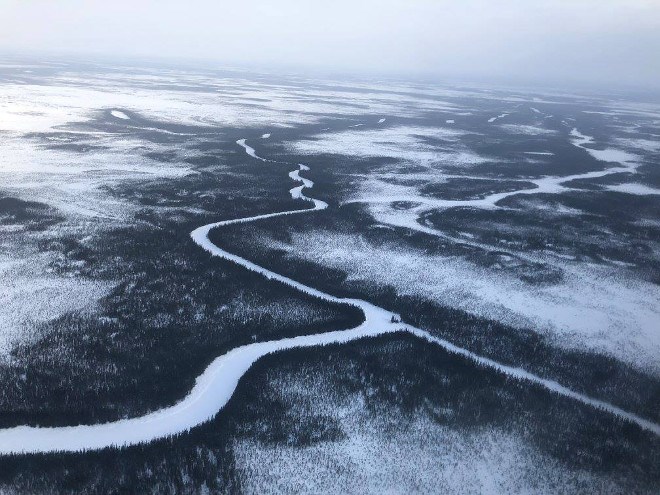As Mushkegowuk Council is working on the national marine project, there are hopes that the work on terrestrial conservation will also be a part of it, says the organization's lands and resources director Vern Cheechoo.
Cheechoo and the marine project manager Lawrence Martin took part in the Peoples' Summit that was held virtually this week.
In addition to giving a National Marine Conservation Area (NMCA) project update, the presenters talked about terrestrial conservation in the Hudson Bay Lowlands.
The territory, which the presenters called "the breathing and cooling lands of Mother Earth", is one of the largest wetlands in the world.
The wetlands are crucial in addressing climate change, and peatlands store twice as much carbon as the entire world’s forest biomass, according to Cheechoo.
"We do not own the land. The land is who we are. We are the guardians of this land on behalf of our future generations. It's all our responsibility to look after this land," he said. "It's no longer about us, it's about everybody. The whole region, the whole earth is suffering from the changes that are happening."
There are several threats to the region, Cheechoo said.
One threat is caused by climate change. Gathering food has become more difficult, travelling is more treacherous now and there are unpredictable weather patterns, he said.
Another threat to the region is Bill 197, the Far North Act and Critical Minerals Strategy
"All three above have one thing in common and that's what they call 'removing roadblocks' for development. The rollback of legislation, removing roadblocks for development, changes in Environmental Assessment process to fast track development," Cheechoo said Tuesday.
There is also a looming threat from the Ring of Fire upstream development that could potentially bring hundreds of years of mining and an increased future population of people living in the region, he said.
With the Ring of Fire, the whole region will be impacted, from the road construction to the mining, Cheechoo said. It’s also the government’s responsibility to ensure the eco-significant regions are going to be protected, he said calling for more engagement with the communities.
“It’s just a fear that somewhere down the road my future generations are going to feel the full impact of that region if it gets developed,” he said. “The communities west of the Ring of Fire, they are not downstream. Our communities are downstream, everything within the wetlands, all the habitats are downstream.”
The moratorium Mushkegowuk chiefs called for in January was also to allow time to do comprehensive studies and ensure there are proper protection plans, the presenters said.
“There is a potential peatland disturbance from that development,” Cheechoo added.
He said they made a suggestion to Parks Canada to begin talks on terrestrial conservation, and Parks Canada official Kevin McNamee was “quite excited.”
“These regions are actually one ecosystem, that’s how we look at it, it’s not separate. They are all connected: the water in the wetlands, how it flows into the basin. One feeds the other,” he said.
“The NMCA is just a part of a bigger picture. Those discussions are going to start to happen, and we hope there will be a parallel process as we work on the NMCA and the work on terrestrial will also be a part of it,” he said.



